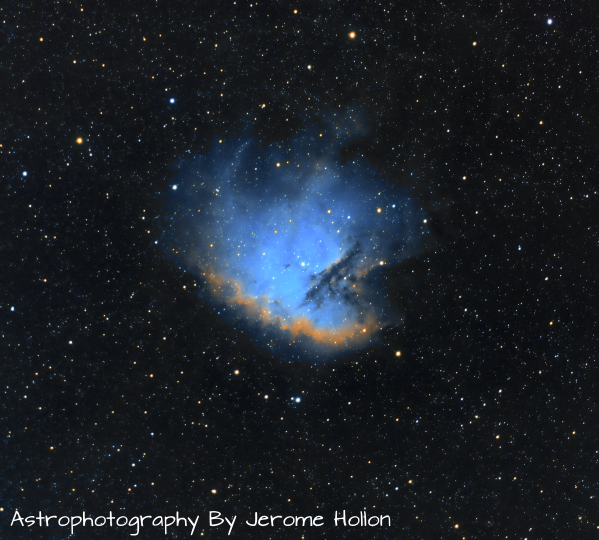Pacman Nebula
Sep 28, 2022
Pacman Nebula
| Other names | NGC 281, IC 11, Sh2-184, LBN 616 |
| Type | Emissions Nebula |
| Distance | 9,200 ly |
| Size | 48 ly |
| Location | Cassiopeia |
| Captured | Sep 28, 2022 |
| Capture type | Narrowband (SHO) |
| Total time | 4.5 hours |
| Frames | SHO 18x600' each |
| Telescope | AT80EDT |
| Camera | ZWO ASI294mm |
| Tripod | CGEM-70-EC |
Pacman Nebula in Cassiopeia
This is a very faint emissions nebula in the constellation of Cassiopeia. It’s so faint that it’s a really difficult object to capture unless you have a really good guiding and dark enough skies to be friendly with long exposures. I was lucky to be able to capture this on a near moonless night, so the skies were dark. I tested out using ten minute exposures on this and it worked out really well I think. This is using my short focal length telescope so it was really easy to guide and keep things solid at 10 minutes. Next time I do a capture with this, I might try for 15 minute exposures.
The Pacman Nebula gets its name from its resemblance to the Pacman character. You can kind of see it here, I’ve oriented the photo like the character is, with the mouth open and facing to the right. If you know it is supposed to look like Pacman, you can see it. Those dark areas in the nebula are called Bok Globules and aren’t actually dark. They’re just full of really dense gas and rapidly forming stars. There’s just so much gas there that you can’t see anything through it.
The nebula is mostly hydrogen gas that is being ionized to glow red by the stars forming around and behind it. The reason it doesn’t look red here is I’ve shot it in narrowband and applied a false color to it. I used what’s called the Hubble palette which assigns a color to three specific emissions spectra. Sulfur II becomes red, Hydrogen Alpha becomes green and Oxygen III becomes blue. In actuality Sulfur and Hydrogen both appear red to us, however, most of the spectrum for hydrogen is too far into the infrared for our eyes to actually see. These monochrome shots get assigned their colors and combined to form an RGB color image. The ions selected by Hubble were selected for the commonality and the colors were chosen to increase contrast. Most of your images from NASA are shot this way.
